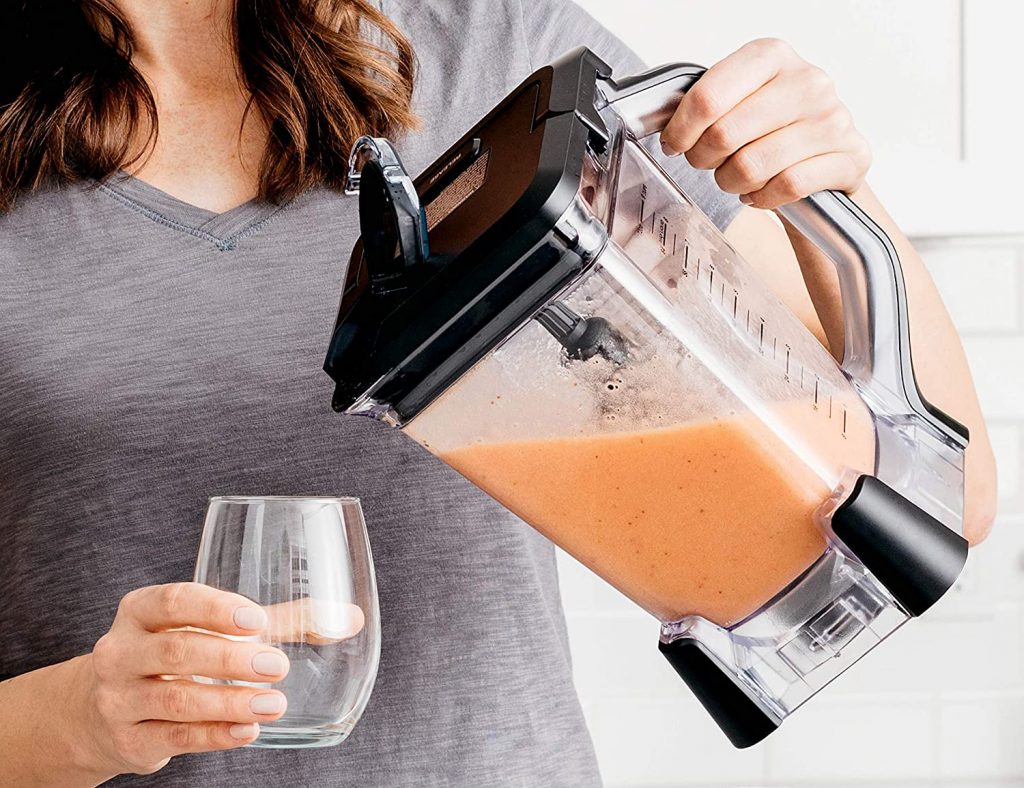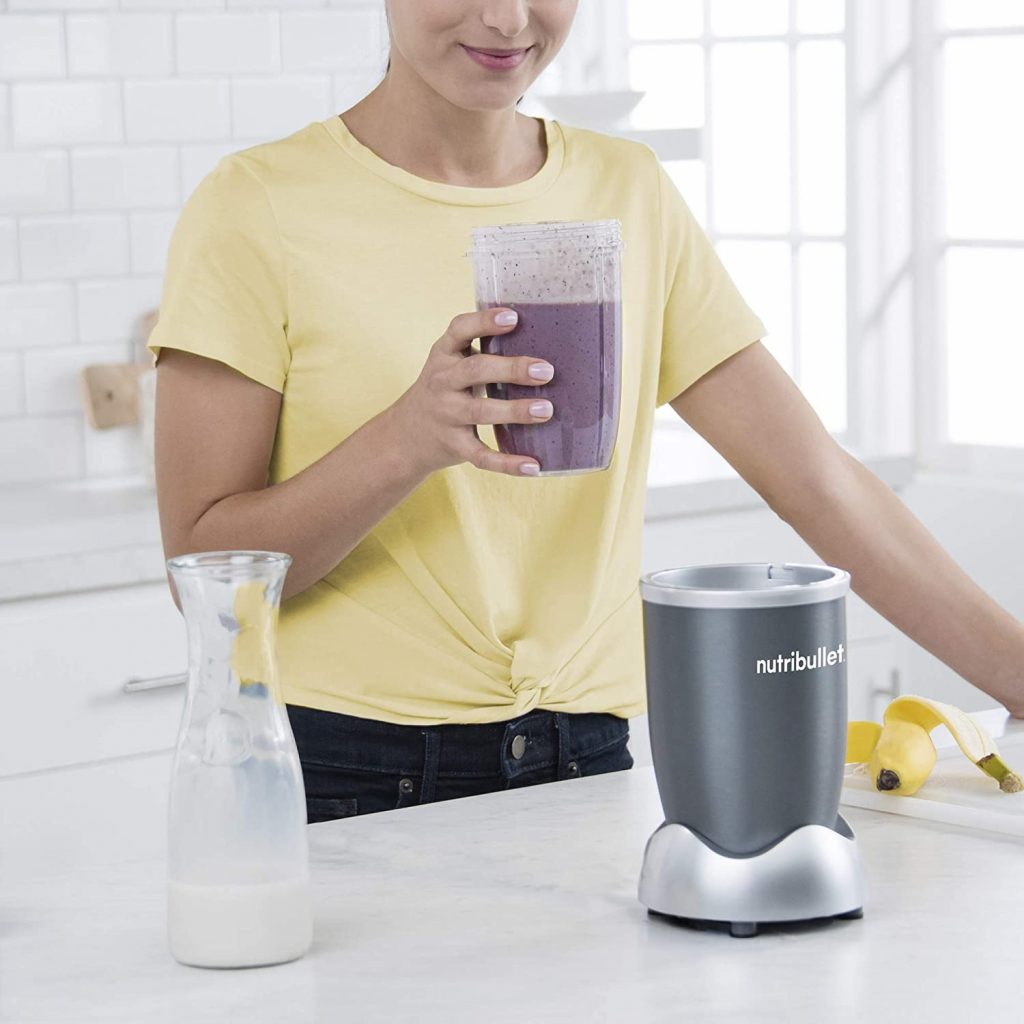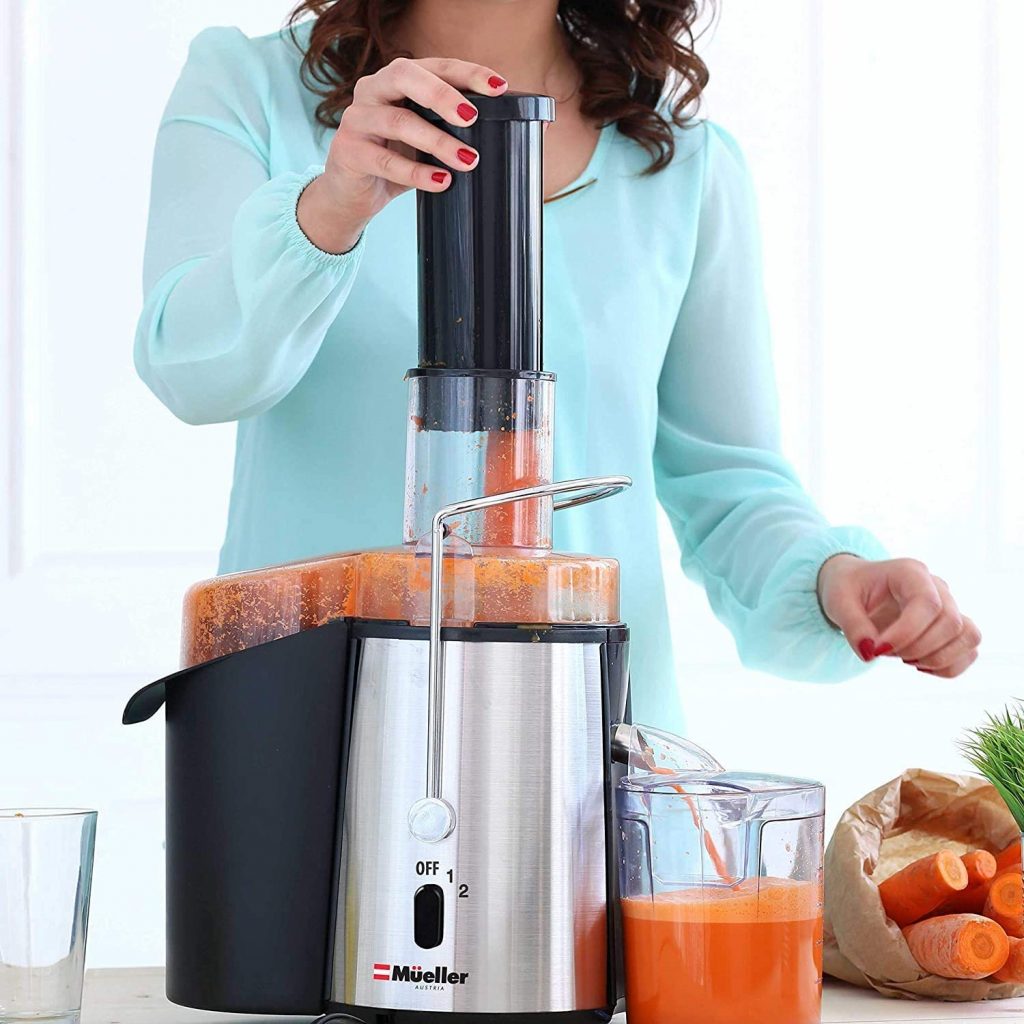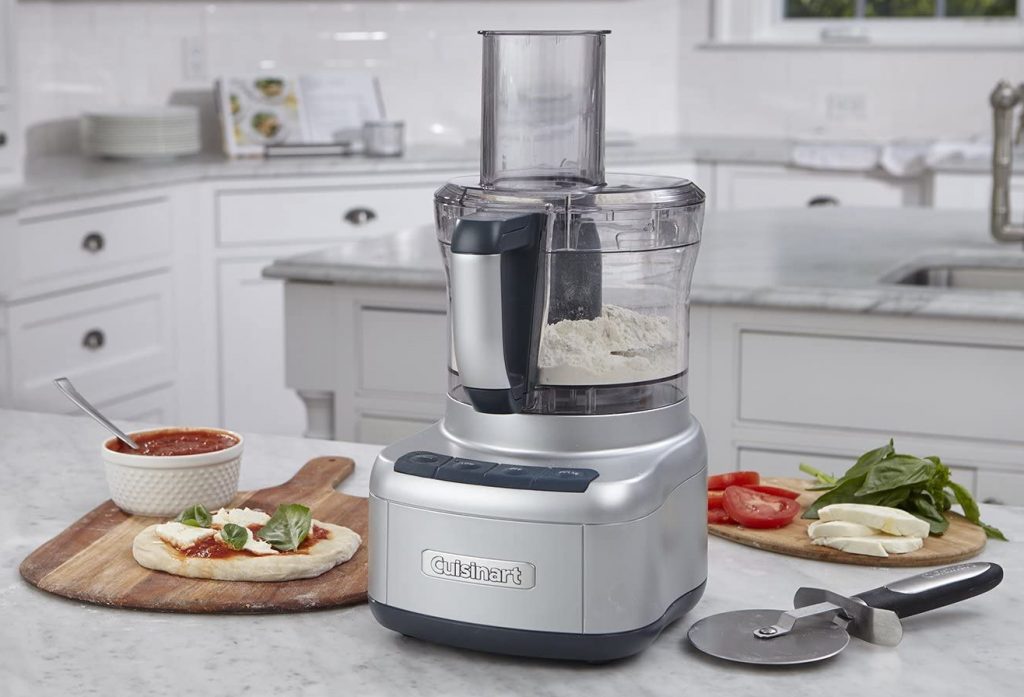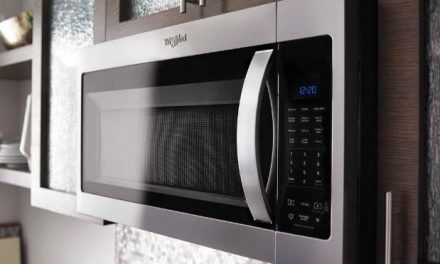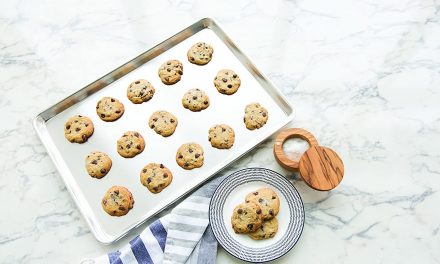Blenders, food processors, juicers—what are they, how do they work, and do you need them? In this article, we’ll explore these appliances and more. We’ll look at how they’re similar, how they’re different, and what tool is best for different applications. And we’ll find out which will give you the best bang for your buck.
Blenders
Blenders pair a mid-to-high powered motor with relatively dull, wedge-shaped blades to essentially crush whatever is poured into them. This is combined with a high-sided vessel that usually narrows at the bottom. This helps the blender draw unblended material from the top of the mixture down to the bottom, where it is pureed before being pushed out to the sides of the container. Through this constant circulation (and the occasional stir or shake), all the material in the blender reaches the desired consistency.
Blenders basically take liquid-dominated mixtures and turn them into purees of various smoothness. Chunky soups, soft fruit, nut butters, and yogurt work well in a blender. Harder food items, such as nuts, can be added to a blender, but make sure there’s also plenty of softer, wetter ingredients. Some blenders can also crush ice, but for most blender applications, some amount of liquid is necessary for them to function properly.
Want more info? See what types of blenders are out there.
- Work by crushing more than cutting
- Best for liquid-dominated mixtures
- Many can also crush ice
- Popular brands: Hamilton Beach, Ninja, Oster
- Price range: $30-$550 for the bestselling countertop blenders on Amazon
Smoothie Makers
Smoothie makers are basically small, powerful blenders. They are specifically designed to produce the best possible smoothie texture and tend to have fewer settings than blenders. For many smoothie makers, the blending vessel is also the serving cup, decreasing the number of dishes required to make and serve the smoothie. Some smoothie makers are portable and battery powered for the most convenient experience possible.
- Designed specifically to make nicely textured smoothies
- Tend to be smaller and are often portable
- Popular brands: Nutribullet, Vitamix, Ninja
- Price range: $15-$130 for smoothie makers on Amazon
Juicers
Juicers take fruits and vegetables (whole or in large chunks depending on the size of the feed chute), separate the solids from the liquid, and output juice. These appliances can handle everything from carrots and ginger root to leafy greens, though not every fruit or vegetable works well in a juicer.
Want to learn more? Check out our article on the different types of juicers!
- Separate out vegetable solids from liquid juice
- Only work for fruits and vegetables
- Popular brands: Nutribullet, Dash, Breville
- Price range: $30-$500 for the bestselling juicers on Amazon
Food processors
Food processors pair a mid-powered motor with sharp, often serrated cutting blades. These blades and discs are flat and usually fill the entire width of the bowl, aiding the food processor in achieving consistent results. Some food processor discs are placed near the bottom of the bowl, such as the chopping and mixing s-blade, while others, like grating and slicing discs, are placed at the top so that food added to the bowl is forced through the plate before being deposited at the bottom of the bowl.
Food processors basically take thick, solid and/or dry ingredients and perform a variety of functions on them. Depending on the discs you use, food processors can chop, mix, slice, grate, and julienne. With the right attachments, food processors can also mix dough, whip egg whites, and juice fruits and vegetables. But keep in mind that liquid-dominated mixtures don’t work well in most food processors, and they tend to leak when overfilled.
Need to know more about food processors? Our types of food processors article has got you covered.
- Work by cutting more than crushing
- Best for thick, solid and/or dry ingredients
- Additional discs provide additional functionality
- Popular brands: GE, KitchenAid, Hamilton Beach, Cuisinart
- Price range: $30-$300 for the bestselling food processors on Amazon
Combo Blenders/Food Processors
Most blender/food processor combos are simply multi-use bases that come with both blender vessels and food processor bowls. This is because the designs of both the blades and the bowl are so different for blenders and food processors that achieving both the crushing/pureeing of blenders and the chopping/mixing of food processors at the same time is difficult. Brands like Cuisinart, Fochea, and Ninja make blender/food processor sets, some of which come with a smoothie maker cup as well.
However, there are a few single-vessel blender/food processor combos that try to find a happy medium between the requirements of both appliances. Cleanblend, Vitamix, and Ninja focus on powerful motors to provide settings from crush and puree to chop and grind. Others, like other Ninja models, use the same vessel for both uses but have multiple blade sets to perform different functions.
- Can handle both crushing and chopping functions
- Unparalleled versatility
- Popular brands: Cleanblend, Vitamix, Ninja
- Price range: $60-$250 for blender and food processor combos on Amazon
Mixers
Mixers, as the name implies, are primarily designed to mix ingredients together. The standard mixer attachment is a whisk, and mixers are used for anything that is usually whisked, like batters and egg whites. But many stand mixers come with additional attachments, from beaters to dough hooks, to shredders and meat grinders.
Not sure what mixer or mixer attachments are right for you? Don’t miss our article on the different types of mixers.
- Best for viscous but stirrable ingredients, like egg whites and batters
- Additional attachments provide additional functionality
- Popular brands: KitchenAid, Black+Decker, Cuisinart
- Price range: $15-$400 for the bestselling mixers on Amazon


